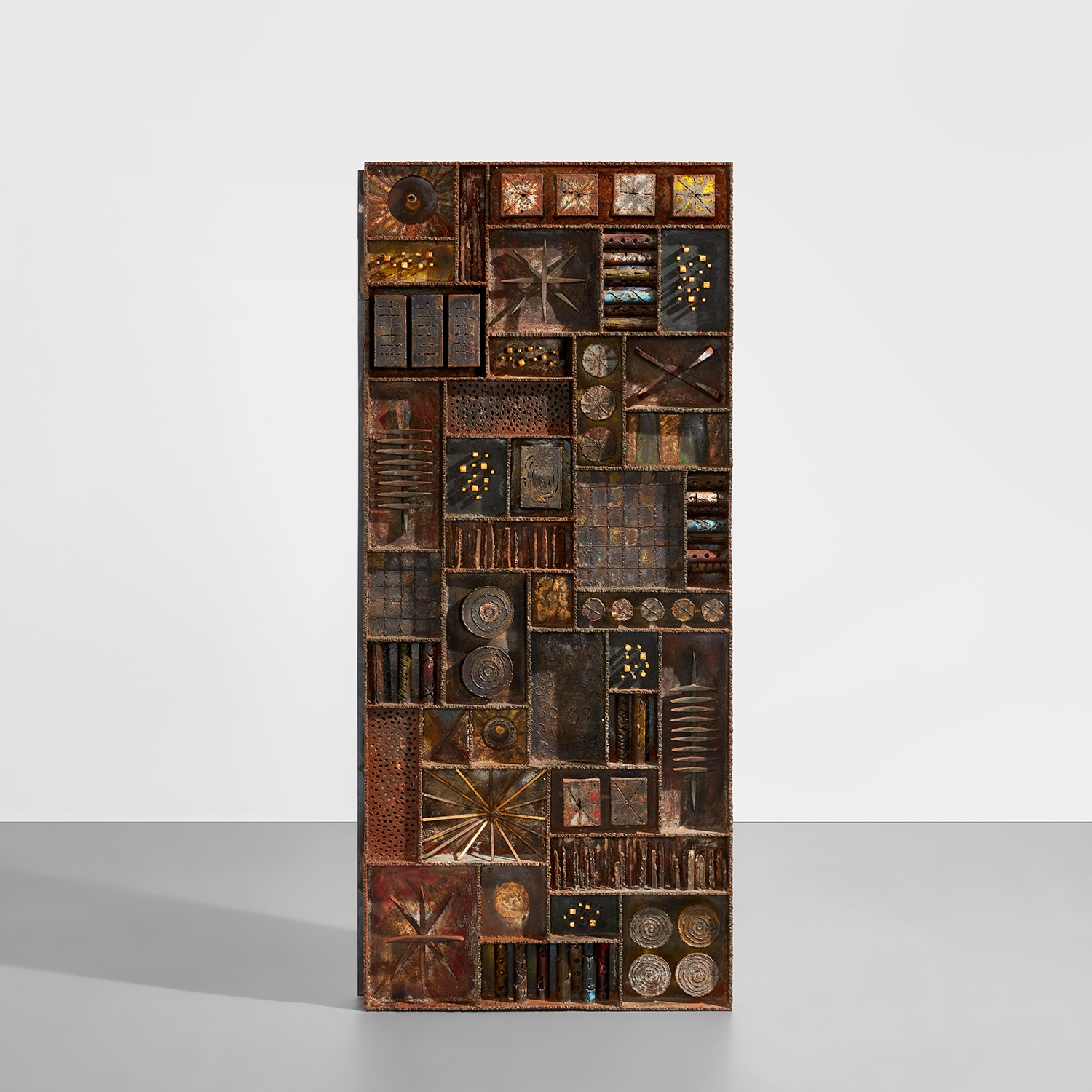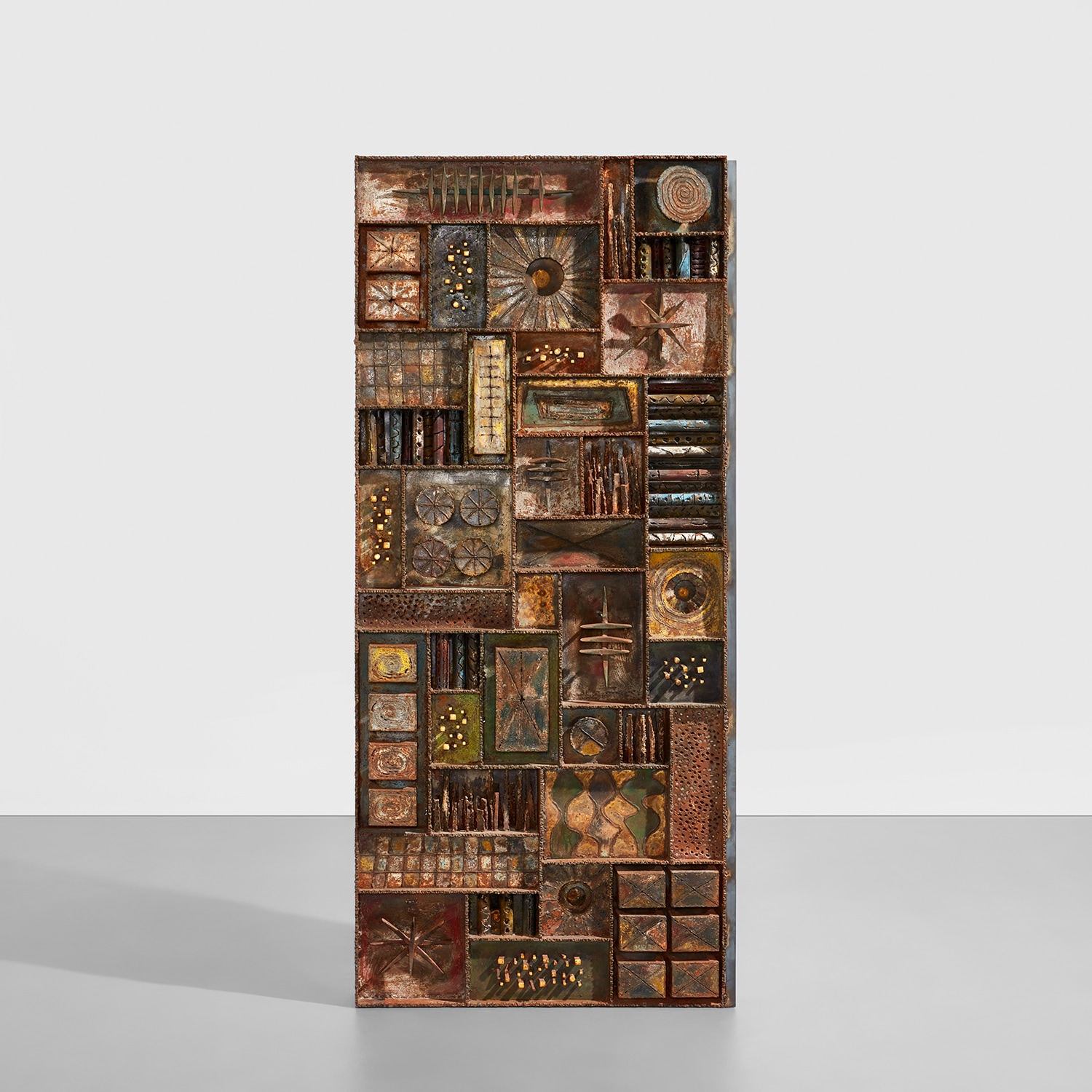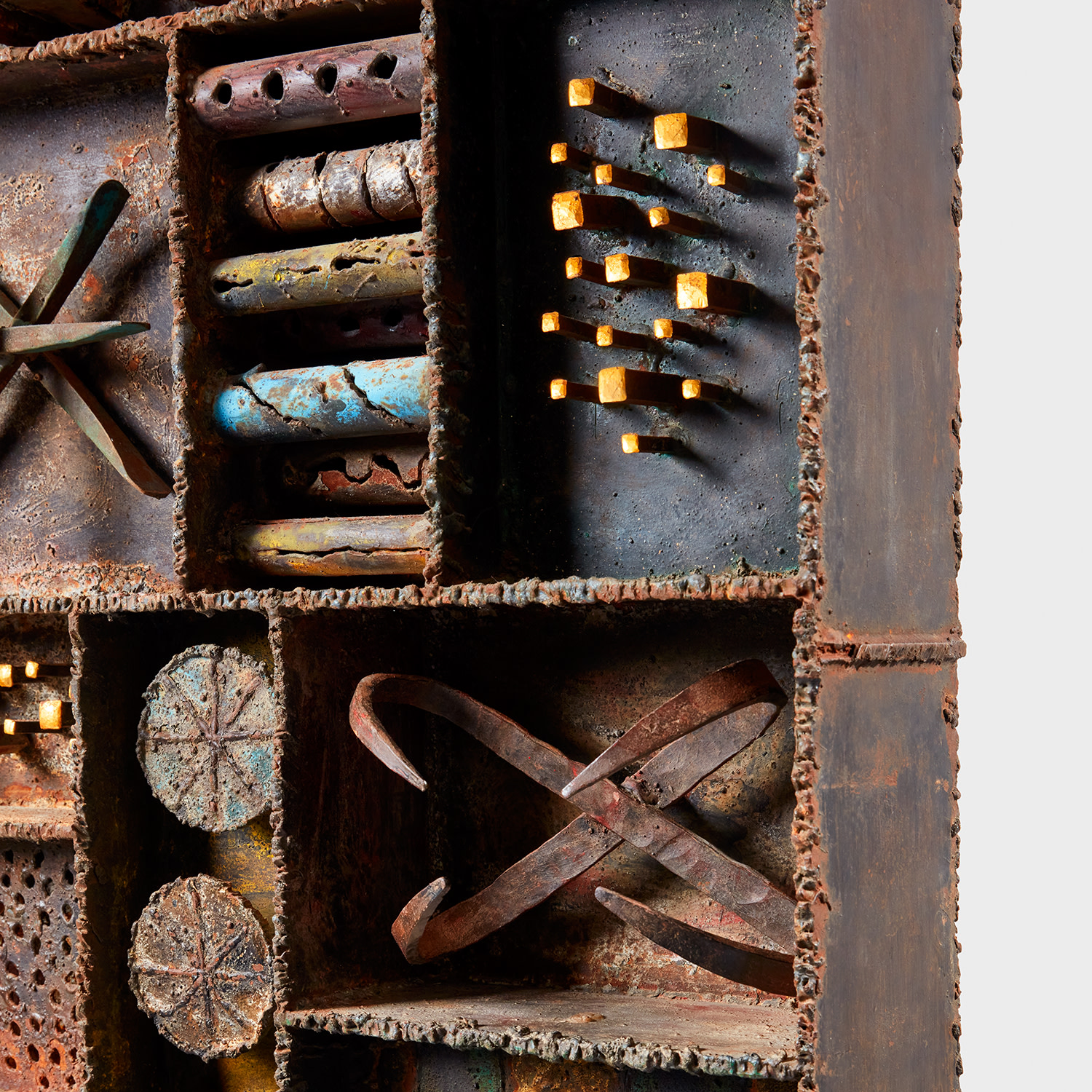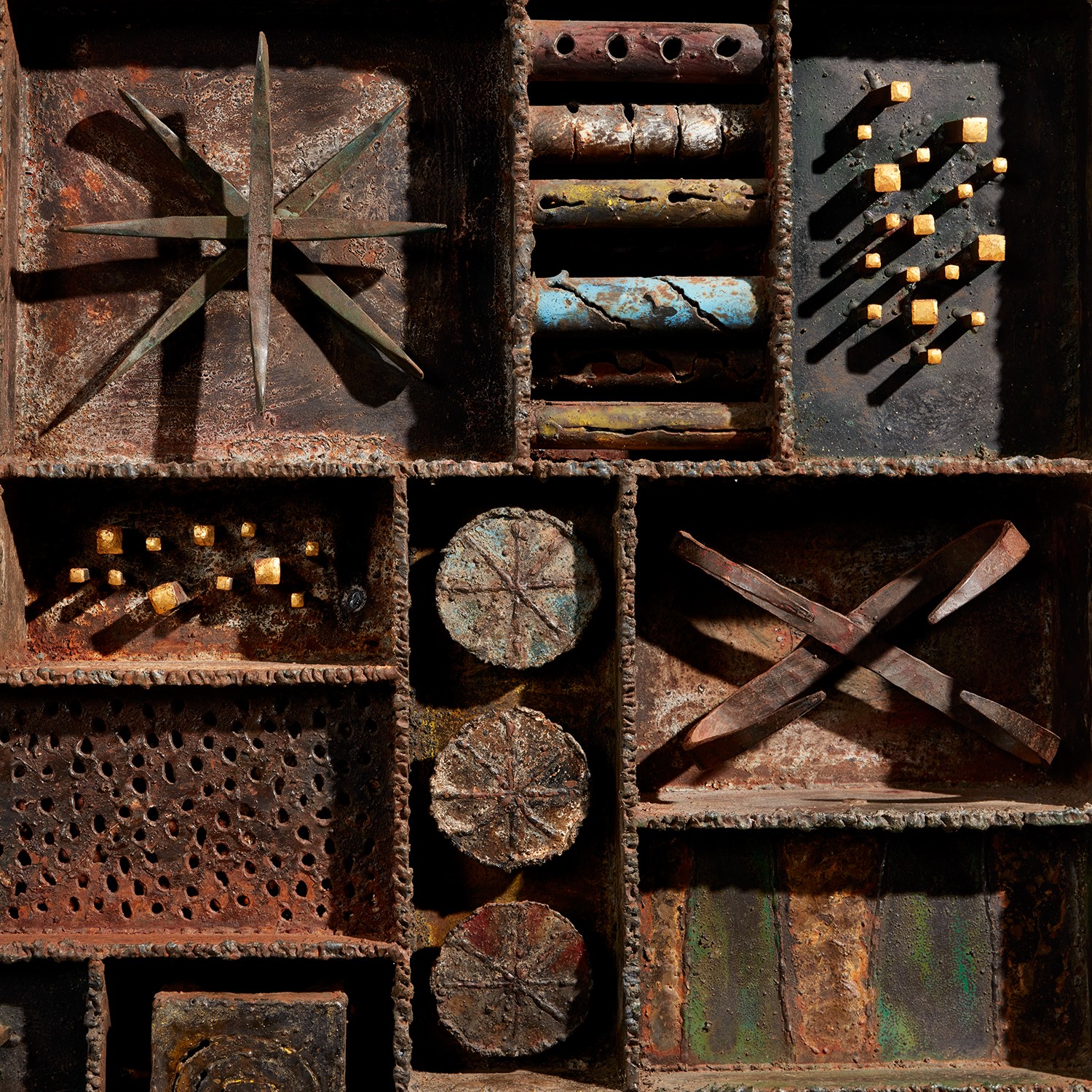









Property from a Private American Collection
47
Paul Evans
Rare two-sided “Sculpture Front” screen
1966
Painted and patinated steel, bronze, gold leaf.
83 7/8 x 36 1/8 x 6 3/4 in. (213 x 91.8 x 17.1 cm)
Executed by Paul Evans Studio, New Hope, Pennsylvania. Interior edge welded Paul Evans 66.